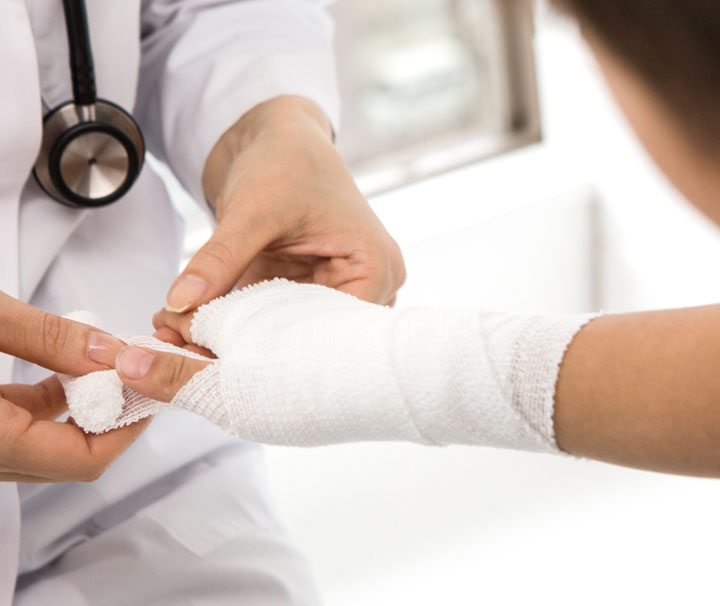
Treatment of joints, ligaments, and bones in children is done by pediatric orthopaedics, a field of pediatric medicine. In the field of pediatrics, an orthopedist is indeed a physician who focuses on treating children of all ages, from newborns to teens. An orthopedic surgeon who treats children may conduct surgery on them if required, but can also give non-invasive therapies like casts and limb braces whenever that is not an option.
Children's organs are still developing; therefore their joints, muscles, and bones are quite different from adults’. If a problem arises, a doctor will most likely send the kid to a pediatric orthopedist. Since children’s bodies develop so rapidly throughout youth, parents may mistake natural teething problems for something aberrant. As a result, speak with your child’s doctor before seeing a pediatric orthopedist.
What Is It?
Pediatric orthopedists treat kids via the use of surgeries as well as other medical procedures. You and your kids, pediatric orthopedist will collaborate to develop a customized treatment regimen for your youngster.
Pediatric orthopedists have received specialized training in communicating with youngsters about various medical problems. Not only can children suffer from a variety of physical problems, but they also respond to them in a variety of ways.
Conditions that treat under it
Musculoskeletal issues in children are distinct from those in adults. Children’s bodies are still developing, thus their reaction to injuries, illnesses, and abnormalities may vary significantly from an adult’s.
In other cases, what seems to be an issue in a youngster is only a growth difference that will go away in due course. Toeing the line with a child is a wonderful illustration of this. Even now in seniors, a few of the bones and joint issues that children experience as a result of rapid development never arise. Even with the same condition, the examination and care of a youngster are often quite distinct from those of an adult.
Medical-surgical teams are the greatest bet for treating children with complicated pediatric issues. Pediatric medical doctors deal with a wide range of musculoskeletal issues in children, including:
- Deformities of the limbs and spine might be discovered early in childhood or as the child grows older
- Anomalies of the gait
- Blown ribs
- Infections of the bones or joints, as well as tumors
Treatment Options
- Chronic scoliosis causes the backbone to bend or bend into a “C” or “S” form. Irregular shoulders, shoulder joint prominence, or waistline abnormalities are all symptoms of scoliosis. Scoliosis affects two to three percent of school-aged children. It affects mostly teenage females and runs in generations.
- Clubfoot is a term used to describe a group of foot deformities in which your baby’s foot is bent out of form or place. The foot is placed at an acute angle to the ankles, much like the head of a golf course. Clubfoot is a frequent congenital condition that affects just a few newborns. Clubfoot is a frequent pediatric orthopedic disorder. It is present from birth and may be detected by ultrasonography. Undiagnosed foot deformities can make wandering difficult and painful.
- Hip dysplasia is the medical name for a displaced hip. The hip is a bone in the body joint in which the leg bone ball inserts into the hip joint. Hip dysplasia is indeed a range of diseases ranging from total dislocation to a deformed socket with a shallow ball. Hip dysplasia is visible at birth.
- Perthes syndrome is an uncommon childhood condition that damages the femur head. The blood flow to the epiphysis of the femur becomes insufficient in Perthes syndrome. So the bones weaken and crumble.
- The cause of this femoral head artery issue remains unknown. It’s not an injury or a basic blood vessel issue. A kid having Perthes disease is normally healthy, and over time, the blood vessels regenerate, resupplying the dead bone tissue. The femoral head then regenerates and revamps over many years. After a ‘normal’ broken bone or fracture, this process is comparable but takes more time.
- It’s being used to rectify defects in skeletal structure, as well as lengthen bones. An outside frame is attached to the afflicted limb during limb lengthening. The framework includes the limb while encouraging development at the location of a surgical fracture. Bones may now be securely lengthened up to 6 inches. Severe limb abnormalities or reduction may need many stages of therapy.
When to See a Doctor?
Pediatric orthopedists are experts, thus most kids are recommended by their doctor. Pediatric orthopedists address a wide range of disorders including growth irregularities, Scoliosis, fractured ribs, inflammation, and joint diseases, clubfoot, mobility challenges, physical injury, spinal challenges, foot or ankle procedures, Scoliosis, Nerve concerns, limb abnormalities, and mobility concerns.

